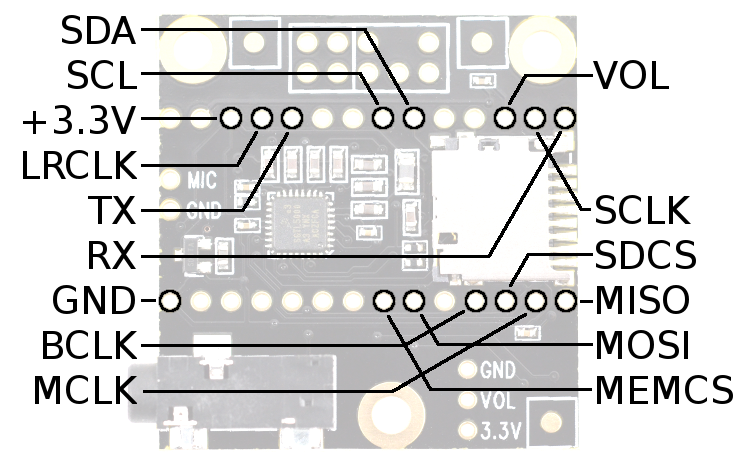The pins in the example-sketch ?
Ignore that.
The only important pins are those for the Audioboard - and they are fixed. The Audiolibrary knows which pins it needs for output, and they are assigned automatically. And they are not assigned in the sketch.
SD is a little different, the pins for the SPI-BUS which is used by the sd-card-slot are defined, and can not be changed.
The CODECS don't have any pin-requirements. It is pure software.
If i remember correctly - i don't have the Example-skecth open right now - there are #defines at the beginning of the skecth were you can switch the output between Audioboard and PWM (..and DAC??)
Just set the one for the Audioboard, and disable the other(s?)
All those pins which are not in use by the Audiolibrary-output, or other libraries like SD, are free to use.
The Audioboard uses the pins in picture some posts above.
Sorry, if i - still - don't understand you correctly, my English is not very good.
You can download the new version where you donwloaded the previous version, it's the same address, i updated the files!
https://github.com/FrankBoesing/Arduino-Teensy-Codec-lib
(Klick on the "Download ZIP" button)
p.s. When you're a bit more experienced, you can use the I2C Pins to add portexpanders and more buttons ,or other chips.. or, perhaps better, you could use a key-matrix to access more buttons with the same pincount.
p.s.s: Please let me know if i u want a little more help - currently, i don't have hardware to run the example-sketch but i could set it up if needed. But...really..i think the only changes are the #defines at the beginning. Let me know when problems occur.



